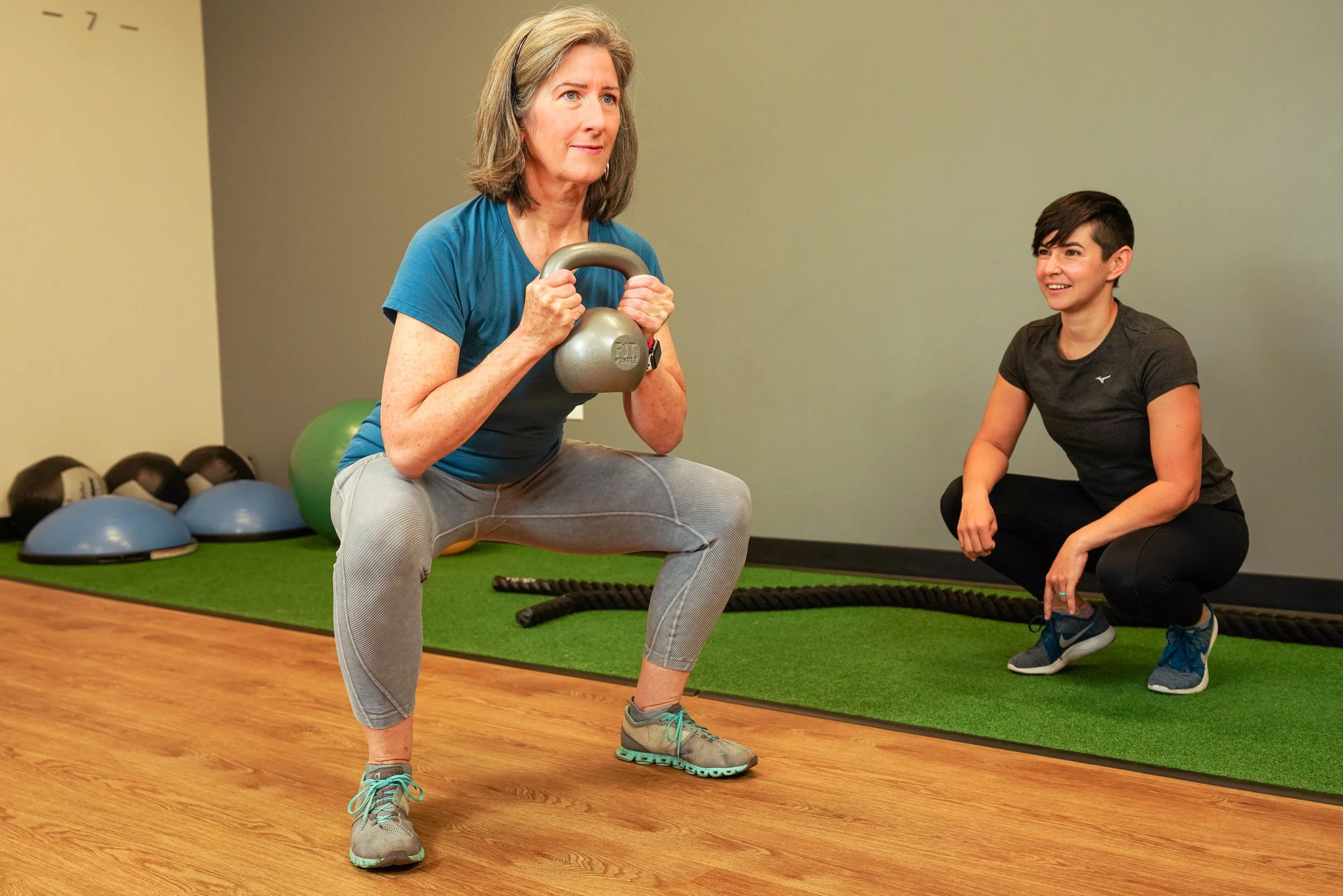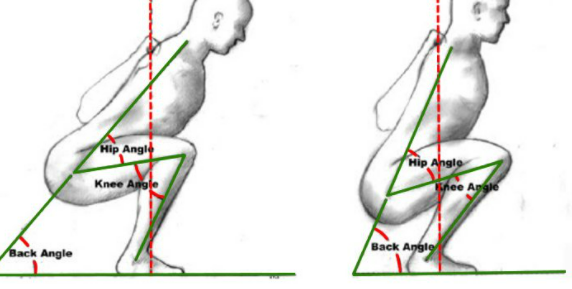How To Perform Squats With Arthritic Knees
One of the more common questions I'm asked is whether squatting is good for people with arthritic knees. It's a legitimate concern. The last thing you want to do with any exercise is make your pain and arthritis worse. So let's be clear...squats, when performed correctly, are one of the most important exercises your can do to to relieve pain and prevent your arthitis from getting worse. They key phrase here is 'when performed correctly'. Which is why in this article we'll teach you how to safely and effectively perform squats with arthritis knees.
The Benefits of Squatting For Arthritic Knees
Because of the controversy and uncertainty around squatting for people with bad knees, I wanted to start by discussing the benefits of squatting for anyone with arthritis in their knees.
Squats build strength in your quads, hamstrings, and hips. Studies have shown those with knee osetoarthritis have significantly impaired strength in their quadriceps, hamstrings, and hip muscles. Using the squat to build strength in these muscle groups is one of the best ways to prevent arthritis from getting worse.
Squats improve movement coordination. When it comes to arthritis, how you move is just as important as how much you move. Squats are a foundational movement pattern that can be used to limit impact on the knees. Learning to properly perform the squat helps prtect your knees through your day and during your favorite activities.
Squats build confidence in your body's ability to do what you love. For many people with arthritis, it's not the physical discomfort that limits their activities. Instead, it's the fear/hesitation that performing a certain movement will make their knee pain worse that keeps them from being active. Squats help build the strength and confidence in your body to live your life without any limitations.
Squats improve movement, strength, and confidence to limit impact on your knees and prevent knee arthritis.
How To Perform Squats With Arthritic Knees
Before going any further, be sure to read our step-by-step guide on how to do a squat without pain. This will build the foundation for how to safely perform the movement. For those with knee arthritis, the following considerations will be important to keep in mind when performing the squat.
Find The Right Squat Stance
Limiting impact at your knee starts with finding the right squat stance. Because everyone's anatomy is slightly different, each person will have a unique squat stance that's best for them. Watch the video on the right for a quick and easy way to find the best squat stance for yourself.
Unlock At Your Hips
For those with knee arthritis, it's important to initiate your squat by sending your hips back, then dropping them down. Unlocking at your hips (vs. unlocking at your knees) keeps you center of gravity centered and places less stress on your knees.
Limit Your Depth
The lower we sink into our squat the more tension you place on your knee. If you're dealing with knee pain from arthritis you may have to limit how far you sink into the squat to protect your knees. For such a simple movement, there is a lot to think about with the squat. Especially when working around knee pain and arthritis. Follow the links below for more information on how to safely and effectively perform the squat movement.
Fix Knee Pain From Squats
How To Work Up To The Squat
If you are dealing with knee pain and arthritis, you may not feel comfortable performing the full squat. That's OK! The following step-by-step exercise progressions will help you build strength and confidence to work up to a full squat.
Find Out Full Guide To Working Up To A Squat Here
The Assisted Sit To Stand
This exercise is the safest variation of the squat movement and a great place to start if you're having knee pain with yoru squats. Simply move from a seated to standing position, using your arms as needed. The goal is to rely less and less on your arms and slowly stand without any assistance.
The Sit To Stand
Once you feel comfortable, lose the support and perform the sit to stand without any assistance. The goal here is to use your leg strength to press yourself into a standing position. Try not to use your hands to 'press off' or use momentum to 'rock' up.
Assisted Squat
The next step is to bring back the assistance but remove the bench. While the TRX is a handy tool, you can also use a band, table, or anything you can grab onto for safety. As your improve, try to rely less on your arms and more on yoru leg strength to perform the squat.
The Box Squat
Next we take away the assistance but add the bench back in. Starting in a standing position, reach yoru hips back to sink into your squat position. Take a full seat if you need. Or simply tap your hips and return to the starting position.
The Air Squat
You made it! Once you feel confident and comfortable with the box squat you can finally move into your full squat.
How To Do Squats Without Pain
The squat, when performed correctly, is one of the best movements to treat arthritic knees. However, a lot can go wrong without a solid movement foundation. Learning, understanding, and practicing the squat is just one of many ways to limit the impact that goes through our body and help solve years of joint pain.
Get started on your own exercise plan to overcome pain and maintain your lifestyle as you get older. It's included in our free program ‘Solving Pain With Strength’. Follow the link below to learn more.





